It looks like you're using an Ad Blocker.
Please white-list or disable AboveTopSecret.com in your ad-blocking tool.
Thank you.
Some features of ATS will be disabled while you continue to use an ad-blocker.
share:
ive seen that watch in a thread before, i dont care if a 2$ market watch would out perform tt , i must have it.
it will reflect my status as a man.
it will reflect my status as a man.
Yeah...so number 5 (the supercomputer)...
What happens if some wet-behind-the-ears-trying-to-prove-something software engineer idiot hooks up his brand new and yet to be tested AI to one of these systems someday and unleashes it with the ability to compute at 1000000x1000000x1000 computations per second?
Lets think dollars just to help your head wrap around a number this large...
Start with one dollar and imagine it becoming a million dollars
Lots-o-cash...but not enough right? Right.
Imagine every single dollar in that million magically turning into another million bucks.
Then - to top it off - take your million million and put it in one big friggin block in space (where it fits) and turn it into a thousand big azz blocks of cold hard now worthless semoleons.
Oh yeah...in one second
I'm not even sure I'll have that many computations in my entire lifetime.
The thing that makes me worry is the fact that EVERYTHING is hooked up to the internet now...nukes...financial systems...phone systems....power plants....infrastructure (like lights and cameras)...virtually everything....
And then you talk about a number that huge and I start wondering, even with all that stuff hooked up via the internet, if we even have enough toys to keep it busy.
What happens if some wet-behind-the-ears-trying-to-prove-something software engineer idiot hooks up his brand new and yet to be tested AI to one of these systems someday and unleashes it with the ability to compute at 1000000x1000000x1000 computations per second?
Lets think dollars just to help your head wrap around a number this large...
Start with one dollar and imagine it becoming a million dollars
Lots-o-cash...but not enough right? Right.
Imagine every single dollar in that million magically turning into another million bucks.
Then - to top it off - take your million million and put it in one big friggin block in space (where it fits) and turn it into a thousand big azz blocks of cold hard now worthless semoleons.
Oh yeah...in one second
I'm not even sure I'll have that many computations in my entire lifetime.
The thing that makes me worry is the fact that EVERYTHING is hooked up to the internet now...nukes...financial systems...phone systems....power plants....infrastructure (like lights and cameras)...virtually everything....
And then you talk about a number that huge and I start wondering, even with all that stuff hooked up via the internet, if we even have enough toys to keep it busy.
edit on 5-6-2011 by coldkidc because: el typo
The LHC should have been number 1 without a doubt
The space shuttle doesn't even come close to that baby
The space shuttle doesn't even come close to that baby
Talking aircraft engines and such....
I remember the Fuel Control on the F-16 engine was the most advance hydro-mechanical machinery on the planet...it had/has like 19,000 moving parts with no electricity needed. Not as pretty as a watch though…
I remember the Fuel Control on the F-16 engine was the most advance hydro-mechanical machinery on the planet...it had/has like 19,000 moving parts with no electricity needed. Not as pretty as a watch though…
Originally posted by coldkidc
I'm not even sure I'll have that many computations in my entire lifetime.
Don't sell yourself short, you're brain is doing more than you are aware of............
Peace
what about the internet? It's not technically a machine, but still..
Originally posted by elevenaugust
1- The Space Shuttle
The space shuttle has more than 2.5 million parts, including almost 370 kilometers (230 miles) of wire, more than 1,060 plumbing valves and connections, over 1,440 circuit breakers, and more than 27,000 insulating tiles and thermal blankets.
In 8 ½ minutes after launch, the shuttle accelerates from zero to about nine times as fast as a rifle bullet, or 28,002.6 kilometers per hour (17,400 miles per hour), to attain Earth orbit.
Am I really the first person to say that yes, these are technological achievements that are definitely worth mentioning. BUT....it only took one measly insulating tile out of 27,000 to take out our precious Columbia....R.I.P.
:_|
S+F for the excellent job and linkage. All in all I did learn a lot!
edit on 5-6-2011 by redNyx because: html is my bane
Out of all of those amazing things, a watch is included? I'm not too impressed. What could you gain by wearing it? You'd get bored with it in a
week.. No USB hookup? =]
reply to post by SaberTruth
Who says it was an accident? Forms of life probably occur everywhere, and places where it isn't so amazing, and a failure.. and doesn't look like a 'creator' created it, has no one around to notice. Life didn't develop far enough for creatures as intelligent as us.
Of course it seems as if it were created 'just for us'.
Let's say the amount of planets in the universe is "x" (probably infinite). You give "x" planets 14 billion years and you're bound to get something amazing somewhere. We happen to exist on one of those planets that developed fully.
Why aren't we somewhere where it isn't as amazing & developed you ask? Because we're at the top of a 5 billion year old skyscraper of genetic background of constant survival and adaptation. Without all of that amazing stuff, we wouldn't have a chance to exist at all.
The theory that 'everything is so amazing so it must've been created' is flawed because of this, in my humble opinion. If you have an infinite amount of mass, and an infinite amount of time, the product is not an accident. You have complete failures that never became more than molten rock, and then you have earths, and everything in between. If we as humans, had any idea of what existed outside of our tiny solar system or planet for that matter, it's my guess that we would no longer believe how special we were. It's kind of egotistic to believe that we're so amazing that an omnipotent being would create this fractal universe for us, right?
(I say 'infinite' because the amount is unimaginable to us)
reply to post by SaberTruth
Who says it was an accident? Forms of life probably occur everywhere, and places where it isn't so amazing, and a failure.. and doesn't look like a 'creator' created it, has no one around to notice. Life didn't develop far enough for creatures as intelligent as us.
Of course it seems as if it were created 'just for us'.
Let's say the amount of planets in the universe is "x" (probably infinite). You give "x" planets 14 billion years and you're bound to get something amazing somewhere. We happen to exist on one of those planets that developed fully.
Why aren't we somewhere where it isn't as amazing & developed you ask? Because we're at the top of a 5 billion year old skyscraper of genetic background of constant survival and adaptation. Without all of that amazing stuff, we wouldn't have a chance to exist at all.
The theory that 'everything is so amazing so it must've been created' is flawed because of this, in my humble opinion. If you have an infinite amount of mass, and an infinite amount of time, the product is not an accident. You have complete failures that never became more than molten rock, and then you have earths, and everything in between. If we as humans, had any idea of what existed outside of our tiny solar system or planet for that matter, it's my guess that we would no longer believe how special we were. It's kind of egotistic to believe that we're so amazing that an omnipotent being would create this fractal universe for us, right?
(I say 'infinite' because the amount is unimaginable to us)
Thank you all for your input!
I should have done a "Top 20 most complex machines ever built" thread then...
As lots of you suggest new entries in the list, I've put four new "complex machines" in it....
------------------------------------------------------------------------------------------------------------------------------------------------
12- The Antikythera Mechanism
Definitely an incredible achievement considering that it was built between 150 and 100B.C.!
Sources: wikipedia and Antikythera site
It was capable of:
- Calculate the position of the Moon and the Sun
- Showing the Greek signs of the Zodiac
- Calculate the location of planets (Mars, Venus,
- Compensate for the effect of the extra quarter day in the solar year (there are 365.2422 days per year)
- Showing the first anomaly of the Moon's orbit
- Displaying the lunar phases
- Showing the rising and setting of specific stars
- Displaying the 235 months of the 19 year Metonic cycle
- Showing the Saros cycle as weel as the 54 year "Triple Saros" cycle
- Displaying the 76 year Callippic cycle and calculating the timing of the Ancient Olympic Games
- Predicting solar eclipses
....

The main fragment
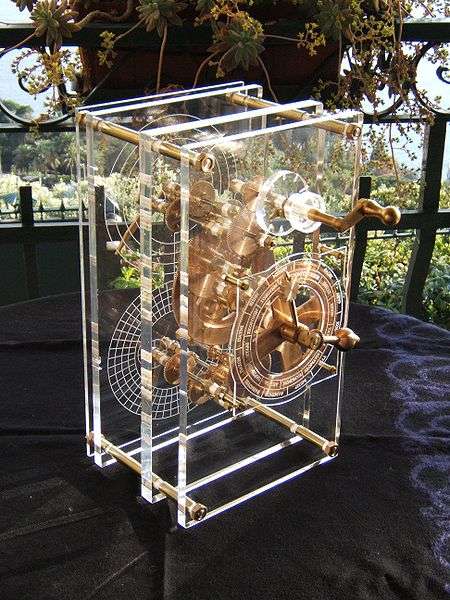
The 2007 reconstruction
11- The MRI Machine
Full description here

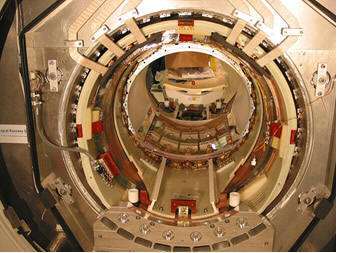
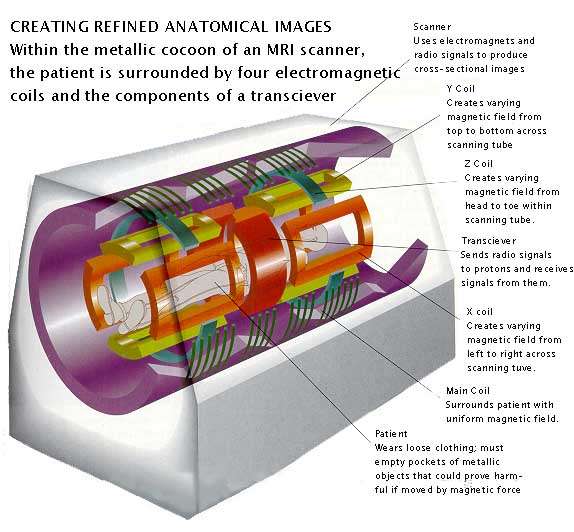
Credits photos: Health-pictures, Health.com and connectorsupplies.com
10- The Bugatti Veyron
Engine short description:
Read the full article here
Such an incredible car worth at least five pictures....




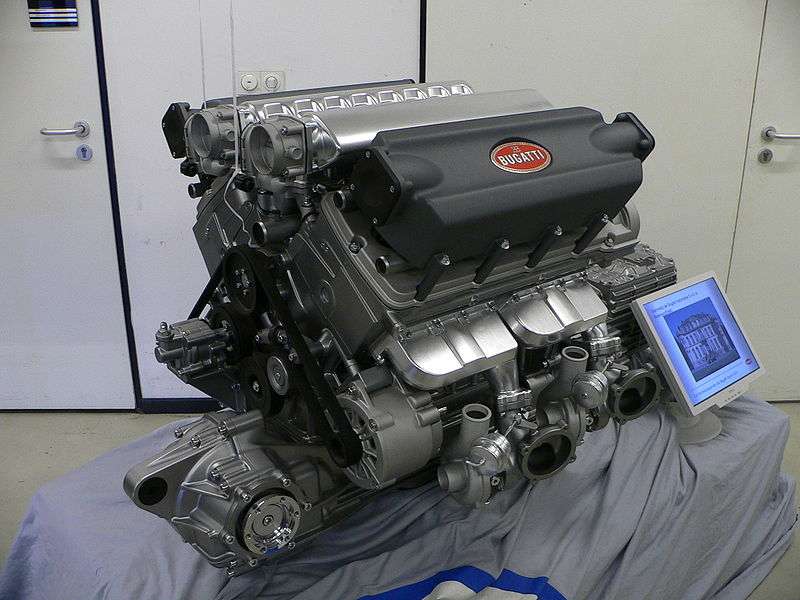
See photos here
9- The B2 Stealth Bomber

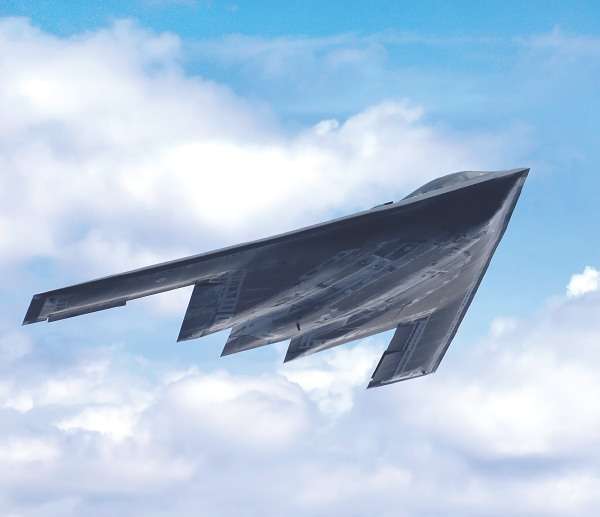
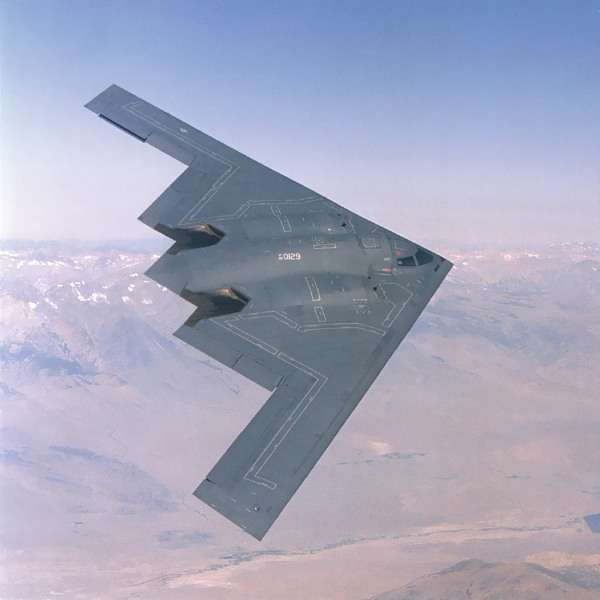

Sources for both photos and full article:
- How it works daily
- Wikipedia
8- The Hubble Telescope
While waiting for the James Webb Space Telescope (sometimes called JWST) which is a large, infrared-optimized space telescope, to be launch in 2014, this presentation will not be complete without the famous Hubble Telescope.
From the main site, ane extract about the incredible precision and capabilities of the optics:


Credits photos due to main Hubble site (see above) and RCNews
I should have done a "Top 20 most complex machines ever built" thread then...
As lots of you suggest new entries in the list, I've put four new "complex machines" in it....
------------------------------------------------------------------------------------------------------------------------------------------------
12- The Antikythera Mechanism
Definitely an incredible achievement considering that it was built between 150 and 100B.C.!
The Antikythera mechanism is an ancient mechanical computer designed to calculate astronomical positions. It was recovered in 1900–1901 from the Antikythera wreck. Its significance and complexity were not understood until decades later. Its time of construction is now estimated between 150 and 100 BC. The degree of mechanical sophistication is comparable to a 19th century Swiss clock. Technological artifacts of similar complexity and workmanship did not reappear until the 14th century, when mechanical astronomical clocks were built in Europe.[...]
It has over 30 gears, although Michael Wright (see below) has suggested as many as 72 gears, with teeth formed through equilateral triangles.
Sources: wikipedia and Antikythera site
It was capable of:
- Calculate the position of the Moon and the Sun
- Showing the Greek signs of the Zodiac
- Calculate the location of planets (Mars, Venus,
- Compensate for the effect of the extra quarter day in the solar year (there are 365.2422 days per year)
- Showing the first anomaly of the Moon's orbit
- Displaying the lunar phases
- Showing the rising and setting of specific stars
- Displaying the 235 months of the 19 year Metonic cycle
- Showing the Saros cycle as weel as the 54 year "Triple Saros" cycle
- Displaying the 76 year Callippic cycle and calculating the timing of the Ancient Olympic Games
- Predicting solar eclipses
....

The main fragment

The 2007 reconstruction
11- The MRI Machine
An MRI machine uses a powerful magnetic field to align the magnetization of some atoms in the body, and radio frequency fields to systematically alter the alignment of this magnetization. This causes the nuclei to produce a rotating magnetic field detectable by the scanner—and this information is recorded to construct an image of the scanned area of the body. Strong magnetic field gradients cause nuclei at different locations to rotate at different speeds. 3-D spatial information can be obtained by providing gradients in each direction.
MRI provides good contrast between the different soft tissues of the body, which make it especially useful in imaging the brain, muscles, the heart, and cancers compared with other medical imaging techniques such as computed tomography (CT) or X-rays. Unlike CT scans or traditional X-rays, MRI uses no ionizing radiation.
Full description here
Inside the MRI gantry is a complexity of magnets, coils, thermal sensors, heaters, and cooling apparatus. Much of the MRI electronics are located in an equipment room adjacent to the shielded MRI chamber. Equipment includes AC power regulation, RF power supplies, gradient amplifiers, and a cryogenic cooling unit.



Credits photos: Health-pictures, Health.com and connectorsupplies.com
10- The Bugatti Veyron
The Bugatti Veyron EB 16.4 is a mid-engined grand touring car. It is the most expensive modern car in the world at US$1,900,000. The Super Sport version is the fastest road-legal car in the world, with a top speed of 431.07 km/h (267.85 mph). The original version has a top speed of 408.00 km/h (253.52 mph).
Engine short description:
The Veyron features a 16 cylinder engine , equivalent to two narrow-angle V8 engines mated in a W configuration. Each cylinder has four valves for a total of sixty four, but the narrow staggered V8 configuration allows two overhead camshafts to drive two banks of cylinders so only four camshafts are needed. The engine is fed by four bi-turbochargers and displaces 7,993 cubic centimetres (487.8 cu in), with a square 86 by 86 mm (3.4 by 3.4 in) bore and stroke.
The transmission is a dual-clutch direct-shift gearbox computer-controlled automatic with seven gear ratios, with magnesium paddles behind the steering wheel and a shift time of less than 150 milliseconds, built by Ricardo of England rather than Borg-Warner, who designed the six speed DSG used in the mainstream Volkswagen Group marques. The Veyron can be driven in either semi- or fully-automatic mode. A replacement transmission for the Veyron costs just over US$120,000. It also has permanent four wheel drive using the Haldex Traction system. It uses special Michelin PAX run flat tires, designed specifically to accommodate the Veyron's top speed, which reportedly cost US$25,000 per set.
The tires can be removed from the rims only in France, a service which reportedly costs US$70,000. Curb weight is 2,034.8 kilograms (4,486 lb). This gives the car a power to weight ratio, according to Volkswagen Group's 1,001 metric horsepower (736 kW; 987 bhp) figures, of 446.3 metric horsepower (328 kW; 440 bhp) per ton.
The car's wheelbase is 2,710 mm (106.7 in). Overall length is 4,462 mm (175.7 in), width 1,998 mm (78.7 in) and height 1,204 mm (47.4 in).
A Veyron pictured with its hydraulic rear spoiler in the extended position
The Bugatti Veyron has a total of ten radiators....
Read the full article here
Such an incredible car worth at least five pictures....





See photos here
9- The B2 Stealth Bomber
The ‘flying wing’ shaped Stealth Bomber (nicknamed ‘Spirit’) is a unique aircraft that’s designed to make it as invisible as possible. Its shape means there are very few leading edges for radar to reflect from, reducing its signature dramatically. This is further enhanced by the composite materials from which the aircraft is constructed and the coatings on its surface. These are so successful that despite having a 172-foot wingspan, the B-2’s radar signature is an astounding 0.1 square metres.
The B-2’s stealth capabilities, and aerodynamic shape, are further enhanced by the fact its engines are buried inside the wing. This means the induction fans at the front of the engines are concealed while the engine exhaust is minimised. As a result, the B-2’s thermal signature is kept to the bare minimum, making it harder for thermal sensors to detect the bomber as well as lowering the aircraft’s acoustic footprint.




Specifications (B-2A Block 30)
(Data from USAF Fact Sheet, Pace, Spick, Globalsecurity)
General characteristics
Crew: 2
Length: 69 ft (21.0 m)
Wingspan: 172 ft (52.4 m)
Height: 17 ft (5.18 m)
Wing area: 5,140 ft² (478 m²)
Empty weight: 158,000 lb (71,700 kg)
Loaded weight: 336,500 lb (152,200 kg)
Max takeoff weight: 376,000 lb (170,600 kg)
Powerplant: 4 × General Electric F118-GE-100 non-afterburning turbofans, 17,300 lbf (77 kN) each
Fuel Capacity: 167,000 pounds (75,750 kilograms)
Performance
Maximum speed: Mach 0.95 (550 knots, 630 mph, 1,010 km/h) at 40,000 ft altitude / Mach 0.95 at sea level
Cruise speed: Mach 0.85 (487 knots, 560 mph, 900 km/h) at 40,000 ft altitude
Range: 6,000 nmi (11,100 km (6,900 mi))
Service ceiling: 50,000 ft (15,200 m)
Wing loading: 67.3 lb/ft² (329 kg/m²)
Thrust/weight: 0.205
Armament
2 internal bays for 50,000 lb (23,000 kg) of ordnance.
80× 500 lb class bombs (Mk-82) mounted on Bomb Rack Assembly (BRA)
36× 750 lb CBU class bombs on BRA
16× 2000 lb class weapons (Mk-84, JDAM-84, JDAM-102) mounted on Rotary Launcher Assembly (RLA)
16× B61 or B83 nuclear weapons on RLA
Sources for both photos and full article:
- How it works daily
- Wikipedia
8- The Hubble Telescope
While waiting for the James Webb Space Telescope (sometimes called JWST) which is a large, infrared-optimized space telescope, to be launch in 2014, this presentation will not be complete without the famous Hubble Telescope.
From the main site, ane extract about the incredible precision and capabilities of the optics:
Hubble's mirrors are very smooth and have precisely shaped reflecting surfaces. They were ground (shaped by removing glass with abrasives) so that their surfaces do not deviate from a perfect curve by more than 1/800,000ths of an inch. If Hubble's primary mirror were scaled up to the diameter of the Earth, the biggest bump would be only six inches tall.
Shortly after Hubble's deployment in 1990, scientists found that the curve to which the primary mirror was ground was incorrect, causing "spherical aberration." Fortunately, corrective optics were able to solve this problem.
Hubble's mirrors are made of ultra-low expansion glass and kept at a nearly constant room temperature (about 70 degrees Fahrenheit) to avoid warping. The reflecting surfaces are coated with a 3/1,000,000th-inch layer of pure aluminum and protected by a 1/1,000,000th-inch layer of magnesium fluoride. The magnesium fluoride makes the mirrors more reflective of ultraviolet light.


Credits photos due to main Hubble site (see above) and RCNews
edit on 5-6-2011 by
elevenaugust because: (no reason given)
reply to post by OnceReturned
Nice video
Its crazy that. that is what we are and it so hard to understand
Nice video
Its crazy that. that is what we are and it so hard to understand
A lot of that is impressive... But one thing...
I'm surprised a modern super-carrier isn't on the list. I'm sure that it easily beats any sub in terms of overall complexity. Not only is the power plant and related engineering spaces comparable to that of the sub (and multiples at that), it also matches or exceeds it in firepower, and then you have things like multiple elevators that can lift a fully loaded and fueled aircraft from the hangar to flight deck in about 10 seconds, catapults and arresting gear, communications, electronic warfare, defensive armaments, etc... And of course the complement of aircraft has to be integrated with the carrier ship and has to work fairly seamlessly with it - you may as well consider them part of it too.
Yet no mention on the list?
I'm surprised a modern super-carrier isn't on the list. I'm sure that it easily beats any sub in terms of overall complexity. Not only is the power plant and related engineering spaces comparable to that of the sub (and multiples at that), it also matches or exceeds it in firepower, and then you have things like multiple elevators that can lift a fully loaded and fueled aircraft from the hangar to flight deck in about 10 seconds, catapults and arresting gear, communications, electronic warfare, defensive armaments, etc... And of course the complement of aircraft has to be integrated with the carrier ship and has to work fairly seamlessly with it - you may as well consider them part of it too.
Yet no mention on the list?
Originally posted by jessejamesxx
Who says it was an accident?
Evolutionists... atheists... naturalists, whatever you want to call them. Not me. They say no intelligent force or being was needed to make life, and I say that this means there is no way to distinguish between something that arose by accident or chance and something that was designed by an intelligence. That is the logical conclusion to which a rejection of intelligent design must come. And this has nothing to do with wishing for humans to be unique, since even the "simplest" cell, no matter where in the universe it may be found, is incredibly complex and could never arise without intelligent design.
The fact that life is so abundant is yet another indication that chance has nothing to do with it, since the odds of perfect combinations coming together and multiplying by that method even once is astronomical, so what are they for life being found elsewhere on an unimaginable scale? The more life we find, the more absurd the idea of purely naturalistic origins becomes. Statistically, we should also expect that the more time there is and thus the more "trials" to get it right, the closer life should come to no net gain, since there is no goal that is trying to be reached.
Common sense tells us that if you set off a huge bomb in a giant junk yard, the result will NEVER be new and complex machines, but increasing entropy and disintegration. Time, as I said, is the enemy of progress when there is no intelligence to direct any processes. If anyone is egotistical, then, it must be those who insist that the universe is really a perpetual motion machine that no one built... nothing plus time equals everything. And is it egotistical to take God at his word, or to defy one's creator and demand he perform tricks for us to prove he even exists, in spite of a whole universe of designed complexity and synchronicity?
The naturalist cannot say how anything at all came into existence, let alone how the universe became so complex and ordered. I know, the inevitable response is the old "who made God" thing, but there is no escaping the necessity of a First Cause outside of the laws of physics, because even a child can tell you that things cannot create themselves. Things exist, things run down, therefore things came into existence due to a cause that is nonphysical and eternal and intelligent. That's what I observe and conclude.
edit on 5-6-2011 by SaberTruth because: (no reason given)
reply to post by elevenaugust
Great list! only I think you gave NASA to much credit for the number 1 most complex machine...The Russians had a more complex reusable space shuttle that looked identical (nothing suss there at all...) years before hand!
Buran Orbiter
[atsimg]http://files.abovetopsecret.com/images/member/4f71a0c3bb01.gif[/atsimg]
Great list! only I think you gave NASA to much credit for the number 1 most complex machine...The Russians had a more complex reusable space shuttle that looked identical (nothing suss there at all...) years before hand!
Buran Orbiter
[atsimg]http://files.abovetopsecret.com/images/member/4f71a0c3bb01.gif[/atsimg]
edit on 5-6-2011 by Griffo515 because: (no reason given)
Ha! I thought for sure that the US government was going to make top 3! Has to be one of the most boundless, complex, maniacal machines that has ever
been created. Reminds me of that movie "9" where THE Machine made every other machine, ultimately spinning out of control. Who would have
guessed?
And isn't the current trend happening now that every year things keep getting smaller? What gives?
I guess if you look at it, everything really is a larger sum of their smaller parts in some form or another. Human insight and ingenuity fueled by desire and determination never ceases to amaze me.
~Glu
And isn't the current trend happening now that every year things keep getting smaller? What gives?
I guess if you look at it, everything really is a larger sum of their smaller parts in some form or another. Human insight and ingenuity fueled by desire and determination never ceases to amaze me.
~Glu
All these are incredibly impressive machines, but of the original ten I think I was most impressed by the watch. Some have questioned that choice for
the list. I think the reason it rates is that it truly is a work of art, whereas the others are machines created for a larger purpose.
My first thought on the watch was, "Wow, that was a labor of love on the maker's part."
Someone had a dream, challenged themselves to create something never before achieved, not for money, or to further another goal, but for the art of creation.
As for the Antikythera Mechanism, it should serve as a reminder to us that we aren't any smarter than our ancestors. We simply have the luxury of education that has been built upon the intelligence of those that have gone before. For a very long time, humans have had the potential to realize and create great things. The Antikthera Mechanism is proof positive of this.
The Antikythera Mechanism completely solved, if you haven't seen it before:
Antikythera Mechanism in Lego
My first thought on the watch was, "Wow, that was a labor of love on the maker's part."
Someone had a dream, challenged themselves to create something never before achieved, not for money, or to further another goal, but for the art of creation.
As for the Antikythera Mechanism, it should serve as a reminder to us that we aren't any smarter than our ancestors. We simply have the luxury of education that has been built upon the intelligence of those that have gone before. For a very long time, humans have had the potential to realize and create great things. The Antikthera Mechanism is proof positive of this.
The Antikythera Mechanism completely solved, if you haven't seen it before:
Antikythera Mechanism in Lego
reply to post by elevenaugust
Can you imagine a group of people come saying all these machines came out of nowhere? Silly right, but then you realize the most complex machine is the human brain. The human brain created this, but what created the human brain? Same thing, you basically say it came from nothing; BS.
Can you imagine a group of people come saying all these machines came out of nowhere? Silly right, but then you realize the most complex machine is the human brain. The human brain created this, but what created the human brain? Same thing, you basically say it came from nothing; BS.
new topics
-
Las Vegas UFO Spotting Teen Traumatized by Demon Creature in Backyard
Aliens and UFOs: 1 hours ago -
2024 Pigeon Forge Rod Run - On the Strip (Video made for you)
Automotive Discussion: 2 hours ago -
Gaza Terrorists Attack US Humanitarian Pier During Construction
Middle East Issues: 2 hours ago -
The functionality of boldening and italics is clunky and no post char limit warning?
ATS Freshman's Forum: 3 hours ago -
Meadows, Giuliani Among 11 Indicted in Arizona in Latest 2020 Election Subversion Case
Mainstream News: 4 hours ago -
Massachusetts Drag Queen Leads Young Kids in Free Palestine Chant
Social Issues and Civil Unrest: 4 hours ago -
Weinstein's conviction overturned
Mainstream News: 6 hours ago -
Supreme Court Oral Arguments 4.25.2024 - Are PRESIDENTS IMMUNE From Later Being Prosecuted.
Above Politics: 7 hours ago -
Krystalnacht on today's most elite Universities?
Social Issues and Civil Unrest: 7 hours ago -
Chris Christie Wishes Death Upon Trump and Ramaswamy
Politicians & People: 8 hours ago
top topics
-
Krystalnacht on today's most elite Universities?
Social Issues and Civil Unrest: 7 hours ago, 9 flags -
Weinstein's conviction overturned
Mainstream News: 6 hours ago, 6 flags -
University of Texas Instantly Shuts Down Anti Israel Protests
Education and Media: 10 hours ago, 6 flags -
Supreme Court Oral Arguments 4.25.2024 - Are PRESIDENTS IMMUNE From Later Being Prosecuted.
Above Politics: 7 hours ago, 5 flags -
Massachusetts Drag Queen Leads Young Kids in Free Palestine Chant
Social Issues and Civil Unrest: 4 hours ago, 4 flags -
Meadows, Giuliani Among 11 Indicted in Arizona in Latest 2020 Election Subversion Case
Mainstream News: 4 hours ago, 4 flags -
Chris Christie Wishes Death Upon Trump and Ramaswamy
Politicians & People: 8 hours ago, 2 flags -
Any one suspicious of fever promotions events, major investor Goldman Sachs card only.
The Gray Area: 12 hours ago, 2 flags -
Gaza Terrorists Attack US Humanitarian Pier During Construction
Middle East Issues: 2 hours ago, 2 flags -
2024 Pigeon Forge Rod Run - On the Strip (Video made for you)
Automotive Discussion: 2 hours ago, 1 flags
active topics
-
Supreme Court Oral Arguments 4.25.2024 - Are PRESIDENTS IMMUNE From Later Being Prosecuted.
Above Politics • 70 • : Annee -
Weinstein's conviction overturned
Mainstream News • 20 • : Xtrozero -
Cats Used as Live Bait to Train Ferocious Pitbulls in Illegal NYC Dogfighting
Social Issues and Civil Unrest • 22 • : NoviceStoic4 -
Sunak spinning the sickness figures
Other Current Events • 22 • : angelchemuel -
Massachusetts Drag Queen Leads Young Kids in Free Palestine Chant
Social Issues and Civil Unrest • 10 • : Cre8chaos79 -
Nearly 70% Of Americans Want Talks To End War In Ukraine
Political Issues • 93 • : Xtrozero -
University of Texas Instantly Shuts Down Anti Israel Protests
Education and Media • 194 • : Irishhaf -
Fossils in Greece Suggest Human Ancestors Evolved in Europe, Not Africa
Origins and Creationism • 88 • : Xtrozero -
Gaza Terrorists Attack US Humanitarian Pier During Construction
Middle East Issues • 20 • : Justsomeboreddude3 -
Thousands Of Young Ukrainian Men Trying To Flee The Country To Avoid Conscription And The War
Other Current Events • 141 • : Consvoli
